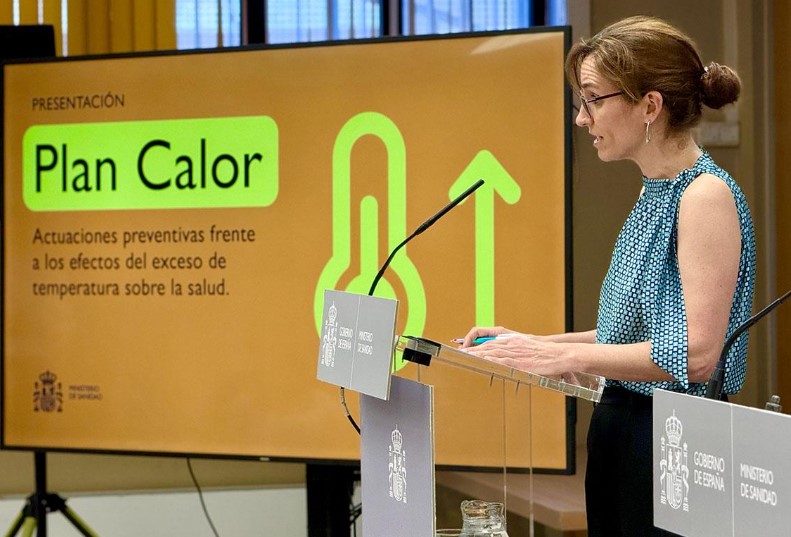In anticipation of the upcoming summer months, the Spanish Ministry of Health has updated its National Plan for the Prevention of Health Effects of High Temperatures. This strategy, in effect since 2004 and reviewed annually, aims to prevent and mitigate the negative health impacts of high temperatures on the population.
Early Warning System and Risk Levels: Protection from Heat
The core of the plan is a comprehensive warning system based on precise weather forecasts and daily mortality data. This allows for early detection of risks and the implementation of appropriate intervention levels according to thermal intensity and expected health effects. A new addition this year is a methodological guide. This guide is designed to help health and civil protection professionals, institutional managers, and citizens understand and interpret the thermal alert levels.
The National Plan defines four health risk levels, indicated by a traffic light color code:
- Level 0 (Green): No risk.
- Level 1 (Yellow): Low risk, especially for people over 65 with other risk factors.
- Level 2 (Orange): Moderate risk for the general population without risk factors, moderate to high risk for people over 65 or under 65 with multiple risk factors.
- Level 3 (Red): Moderate risk for the general population without risk factors, high to extreme risk for individuals aged 65 and over and under 65 with one or more risk factors. A prolonged red risk level due to heatwaves represents an extreme risk for the entire population, especially for vulnerable groups.
Who is Particularly Vulnerable? Identification of Risk Factors
Extreme temperatures can affect everyone’s health, but the extent of the risk depends heavily on individual, social, and environmental factors. Identified risk factors include:
- Personal Factors: Infants and children under 4, people over 65, pregnant women, people with cardiovascular, respiratory, or chronic diseases, people undergoing medical treatment, and people with mental disorders or limited autonomy.
- Environmental, Occupational, or Social Factors: People living alone, homeless individuals, those in economically precarious situations, migrants and tourists, poorly air-conditioned homes or those unable to regulate temperature, or excessive heat exposure due to work, sports, or leisure activities (especially between 2:00 PM and 7:00 PM).
Vulnerability increases with the number of risk factors. Age plays a particularly important role, as mortality is significantly higher among those over 65, and especially over 75. Poverty, which hinders access to well-acclimatized housing, is another significant factor.
Current Information and Subscription Service: Stay Informed
The Ministry of Health updates the overtemperature risk map daily on the warning system meteosalud.es. In addition, a free subscription service is available to the public. This service offers the possibility to receive information about expected temperatures and the associated health risk via email and/or SMS during a requested time interval. This allows citizens to proactively take measures to protect their health.




